Content |
|---|
Description
35 cm.. length and weighing approximately between 340 and 425 g.
The Pink cockatoo (Cacatua leadbeateri) is distinguishable by its spectacular Crest composed by 16 long feathers forward curved. These pens have a wide base with a slightly pink and yellow red-stained central part.
The top ends of the crest are white. Another set of more rounded feathers grow over the eye, forming a white base when the crest is raised. The forecrown is spanned by a band thin and reddish.
The face, neck and underparts are salmon, becoming is white in the coverts.
The flight feather and tail are white with infiltration of salmon on the bottom.
The bill is horn. The irises dark brown and legs grey.
The female looks like your partner, but the head Pink salmon and underparts they are paler. The band Yellow that decorates the bill is brighter and wider. Upper belly It is white instead of Pink salmon. The irises are reddish-pink.
The immature they are identical to the female. The frontal band is bright orange-red, the irises light brown.
- Sound of the Pink cockatoo.
Description 2 subspecies
-
Cacatua leadbeateri leadbeateri
(Vigors, 1831) – Nominal.
-
Cacatua leadbeateri mollis
(Mathews, 1912) – Both similar to the kind adults nominal, but with the crest darker red, with little or no yellow. White Peak.
Behavior:
The couple is the basic social unit, but are maintained contact with other couples nonreproductive through the establishment of groups.
Out of it breeding season, There are mainly small bands consisting of 10 to 50 birds. Major gatherings occur only during periods of drought or when food sources are abundant. In this case, There may be a few hundred individuals, among them, small Galah.
Dormitories they are occupied exclusively outside the breeding season and the birds leave early at dawn.
The Pink cockatoo they forage in trees and on the ground. But, This species is more arboreal that the Galah wave Little corella.
When moving on the ground, He walks slowly to avoid the tall grass.
In the Flock, a bird play always the role of Sentinel. It adopts a very careful attitude, it partially roughcast its crest and regularly pauses during which is very upright inspecting the surroundings.
During the mid-day heat, it finds shelter in the foliage of the trees.. During the summer, rest period is longer.
The paired birds they are always near each other. During periods of intense heat, This bird visit water points, even during the day. At sunset, they return to your bedroom.
Habitat:
Video – "Pink cockatoo" (Cacatua leadbeateri) |
|---|
Its population is distributed by a variety of forest habitats in arid or semi-arid areas.
The species is closely related to the areas of “Mallee“.
Found particularly in afforestation of cypress and eucalyptus, in mixed plots of eucalyptus and Casuarinas or near cliffs.
Its presence in a place is largely also to the existence of a water fountain.
On the other hand, shows a very weak attachment to the fragmented habitats that is no long.
Reproduction:
The nesting season running from August to December. Cockatoos return to their traditional nesting sites.
The cavity for the nest receives improvements: the entrance is enlarged and covered with a layer of fresh chips placed at the bottom of the nest. The nests they are almost always far from one another, at a distance of 2 km.
The spawning is between 2 and 5 eggs being deposited between 2 and 3 days. The incubation It made both parents, begins after the deposit of the third egg and lasts between 23 and 24 days.
The chicks they remain at the bottom of the cavity during 57 days and are fed by the male and the female indistinctly. The family stays near the nest until the last hatchling leaves the nest., they will then join other family groups in the place where food resources are appropriate.
On rare occasions, the Pink cockatoo is forced to eject a couple of Galah He started to lay eggs in their nest, but it can also happen that this form of parasitism is a success. In this case, the partner of the Pink cockatoo takes care of eggs and young after hatching. When are born, the young of the species Eolophus roseicapilla, they behave exactly like their hosts, ignoring the difference in origin.
Food:
With feed seed, herbs, cereals and often of melons (Cucumber myiocarpus). Also consume fresh local figs, pine cones, eucalyptus seeds, bulbs, dried fruits, estate, insects and larvae.
During and after your meal, These birds biting branches and pieces of bark, causing a shower of timber crushed at the foot of the trees.
During periods of intense heat, increase the frequency of his visits to water points.
Distribution:
Size of the area of distribution (reproduction / resident): 2,88 million km2
endemic to Australia. Its main strongholds are in the southwest of Queensland where is quite extended and South of Australia, where is locally common.
In other parts of the continent are very rare and scarce, going back to the vicinity of the Northern Territory and carrying out raids in Western Australia.
Distribution 2 subspecies:
-
Cacatua leadbeateri leadbeateri
(Vigors, 1831) – Nominal.
-
Cacatua leadbeateri mollis
(Mathews, 1912) – Interior West and centre of Australia, towards the East, up to the eyre peninsula and the basin of the Lake Eyre, South of Australia.
Conservation:
• Least concern (Red list 2006).
• Listed as vulnerable by NSW national parks and wildlife.
• Threatened by the law of conservation of species (2005).
Its distribution is very unequal, but only in the Centre - this actually is and South-East where they have widespread. In other parts of Australia, This species is declining due to the thinning of the habitat and its marketing as bird cage.
Competition with the Galah's disability for nesting cavities may be a crucial problem in the future if this species continues to grow. The world population of the Pink cockatoo It is estimated in a little less than 20 000 birds. It is classified as near threatened.
"Pink cockatoo" in captivity:
It is a frequently held in captive animal in your Australia natal, but it is less known in other countries like ours. Its price in the market is very high, especially that of males, being one of the most expensive white cockatoos.
Very noisy, with a great personality, playful and very active. It is very destructive, We must therefore provide toys and wood to gnaw, or otherwise you will satisfy with house furniture and other elements. Inactive animals, bored or stressed tend to yell a lot.
Its life expectancy round between the 40 and 60 years of life.
Alternative names:
– Pink Cockatoo, Leadbeater’s Cockatoo, Major Mitchell’s cackatoo (ingles).
– Cacatoès de Leadbeater, Cacatoès commandant Mitchell (French).
– Inkakakadu (German).
– Cacatua-rosa (Portuguese).
– Cacatúa Abanderada, Cacatúa Inca (español).
scientific classification:
– Order: Psittaciformes
– Family: Cacatuidae
– Genus: Cockatoo
– Scientific name: Cacatua leadbeateri
– Citation: (Vigors, 1831)
– Protonimo: Plyctolophus Leadbeateri
Images Flag-crested Cockatoo:
Sources:
– Avibase, infoexoticos, Oiseaux.NET
– Photos: imagenesdeanimalessalvajes (Alexis Obninsk), David Cook Wildlife Photography, Wikimedia , parcodeipappagalli , Geoffrey Dabb
– Sounds: Patrik Åberg (Xeno-canto)
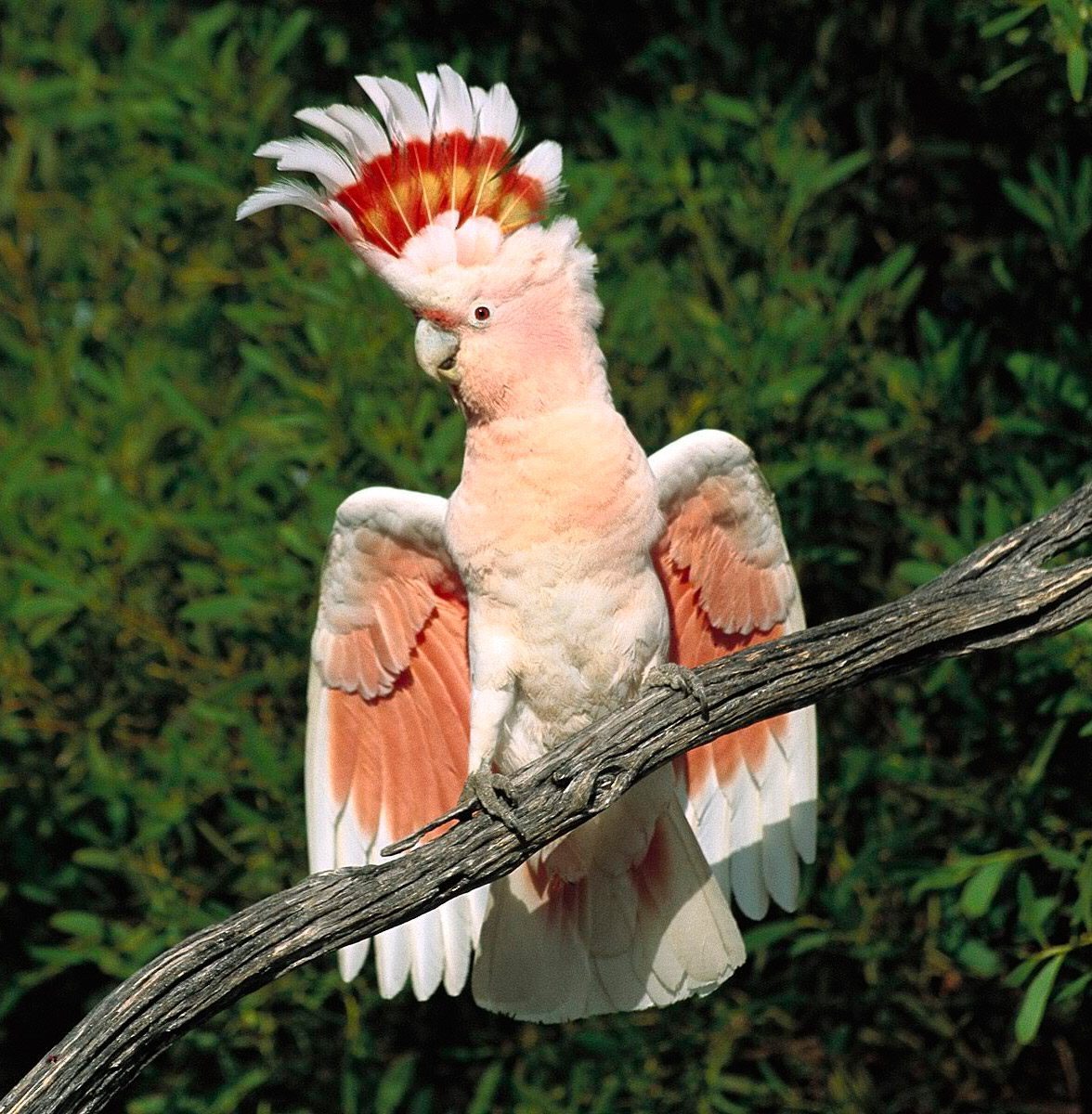

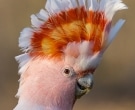
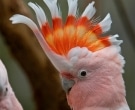
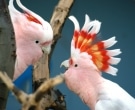
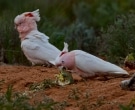

where can i buy them
I do not see the images leadbeateri . . Mollis ! if you want to ask that you send her !
Please, send me images.
Thank you